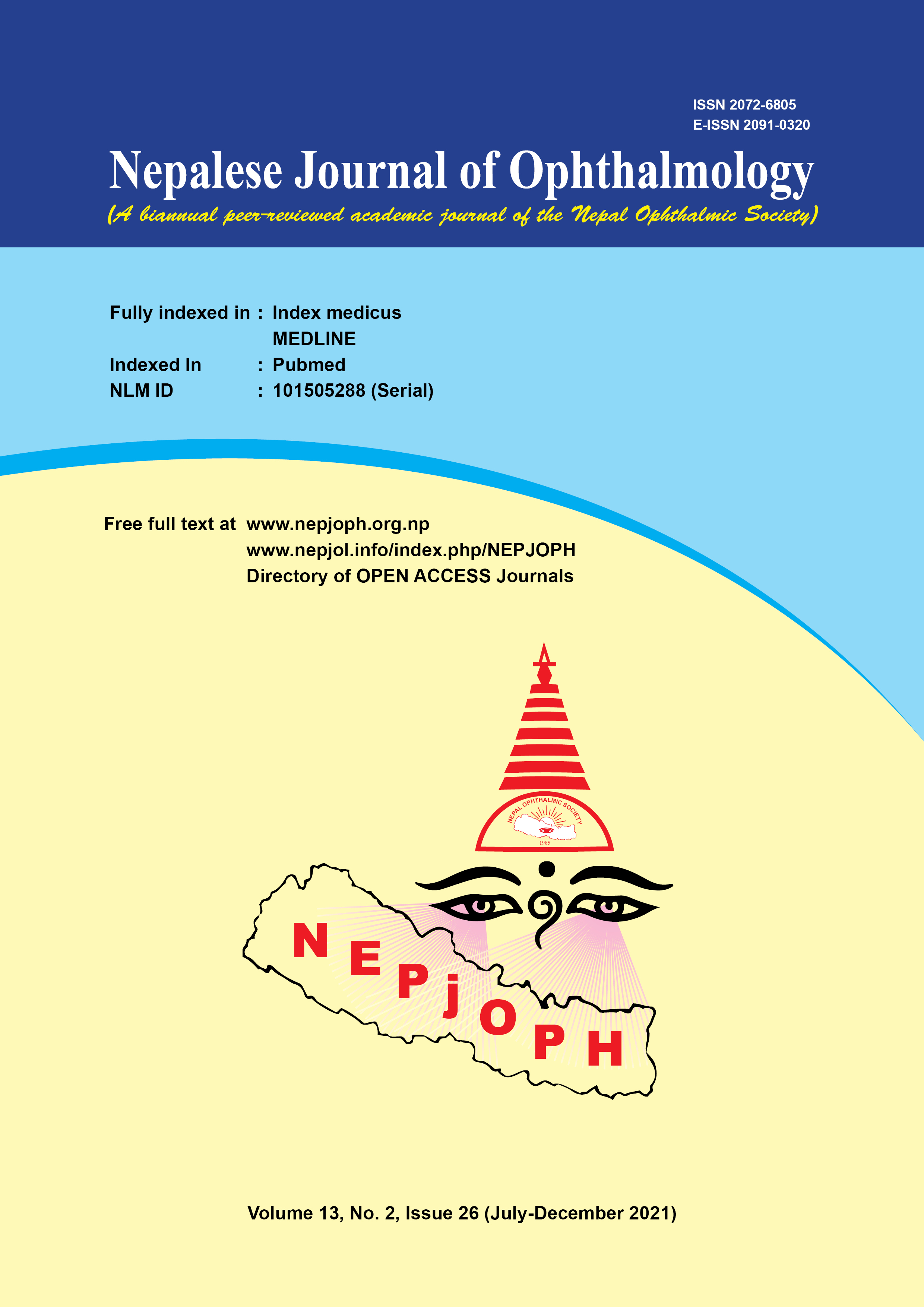Conventional versus Modified Tarso-frontalis Suspension Surgery using Targeted Lid Crease for Simple Congenital Blepharoptosis with Poor Levator Action
DOI:
https://doi.org/10.3126/nepjoph.v13i2.32812Keywords:
Congenital blepharoptosis, Lid crease, Tarso-frontalis suspension surgeryAbstract
Introduction: The routine technique of tarso-frontalis suspension surgery for simple congenital blepharoptosis with poor levator action is cosmetically less rewarding due to either an absence or asymmetry of the postoperative eyelid crease. The objective of this study was to assess the eyelid crease quality after a modified open method of tarso-frontalis suspension surgery compared to the closed method.
Materials and methods: This was a retrospective comparative study reviewing the case sheets of all the patients undergoing unilateral tarso-frontalis suspension surgery with silicon rod employing Fox pentagon design from September 2017 to February 2019 at Mechi Eye Hospital, Jhapa, Nepal. A review of 40 case sheets of congenital lid ptosis with poor levator function(<4mm) aged 9 years or more was done. Tarso-frontalis suspension surgery, modified with a mini blepharoplasty incision, direct attachment of silicon rod to tarsus, completion of pentagon design with supra-brow incisions, and skin-orbicularis-tarsus-orbicularis-skin suture (open method) was done in 20 cases whereas other 20 cases underwent surgery with supraciliary stab incisions (closed method).
Results: The mean age of the patients was 21.1+5.9 years (range 9-30 years). The ptosis amount ranged from 3–10mm. At the 6th postoperative month, most of the cases had good ptosis correction (90% open group, 85% closed group, p=0.74). However, cosmetic outcomes were better in the open group compared to the closed group: 100% symmetrical eyelid crease compared to 40% (p<0.001) and 90% acceptance rate for eyelid contour compared to 70% (p=0.23).
Conclusion: Predictable, targeted, and symmetrical lid crease can be obtained using the modified open method of tarso-frontalis suspension surgery.
Downloads
Downloads
Published
How to Cite
Issue
Section
License
Copyright (c) 2021 Nepalese Journal of Ophthalmology

This work is licensed under a Creative Commons Attribution-NonCommercial-NoDerivatives 4.0 International License.
This license enables reusers to copy and distribute the material in any medium or format in unadapted form only, for noncommercial purposes only, and only so long as attribution is given to the creator.




